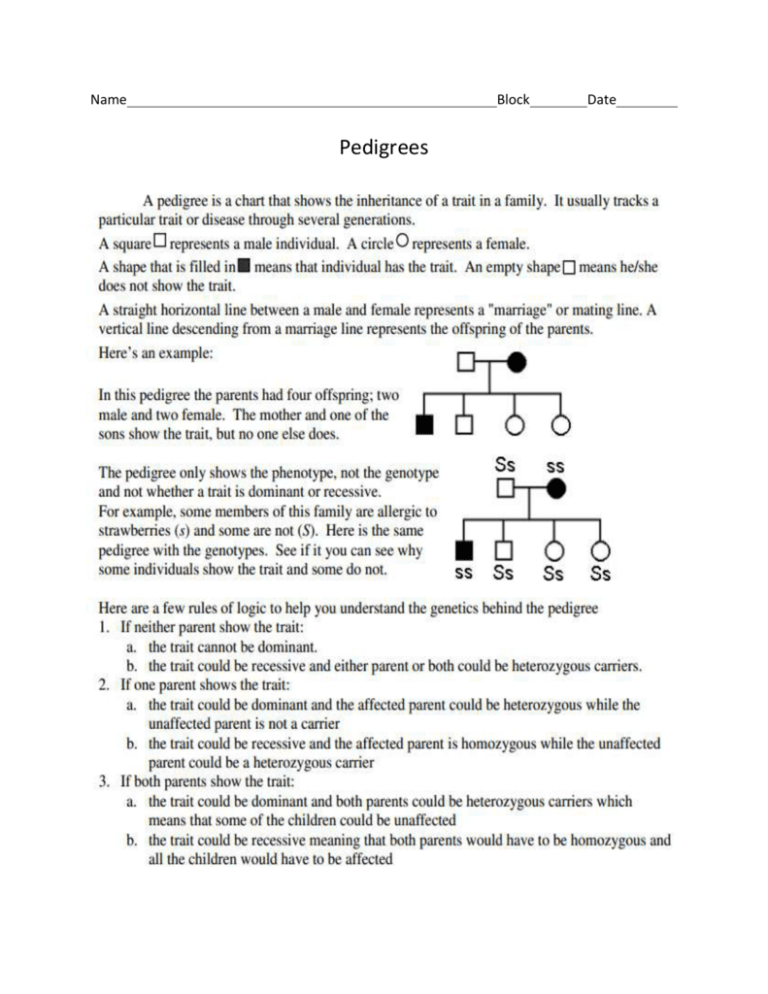Pedigree Worksheet
advertisement

Name Block Pedigrees Date Use Figure A to answer the questions below. 1. Number all individuals on the pedigree at the top of each shape. 2. In a pedigree, a square represents a male. If it is darkened he has hemophilia; if clear, he had normal blood clotting. a. How many males are there? __________________ b. How many males have hemophilia? ____________ 3. A circle represents a female. If it is darkened, she has hemophilia; if open she is normal. a. How many female are there? _________________ b. How many females have hemophilia? __________ 4. The genotypes of the males in a pedigree for sex-linked inheritance are easy to determine since normal blood clotting (N) is dominant and hemophilia is recessive (n). Since these alleles are on the X chromosome only, a male represented by a clear square will have the genotype XNY. A darkened square will be XnY. 5. Females with hemophilia have an easy genotype to identify. They are all XnXn. Both recessive alleles must be present for a female to have hemophilia. If one dominant allele is present (XN), the individual would be normal for clotting. a. Label the genotype under each individual on the pedigree. 6. Females who do not show the trait for hemophilia may be homozygous dominant (XNXN) or heterozygous (XNXn). A heterozygous female is called a carrier and is represented by . Examination of offspring can often determine which genotype the parents have. If any child (son or daughter) has hemophilia, then the female must be heterozygous. If her son has hemophilia, he has genotype XnY. He inherited the Y from the father, so the other allele is his genotype (Xn) had to come from the mother. If a daughter has hemophilia (XnXn), she inherited an Xn from each parent, thus making the genotype for the normal mother XNXn. a. Mark all female carriers in the pedigree by turning their circle into a half-shaded circle.











